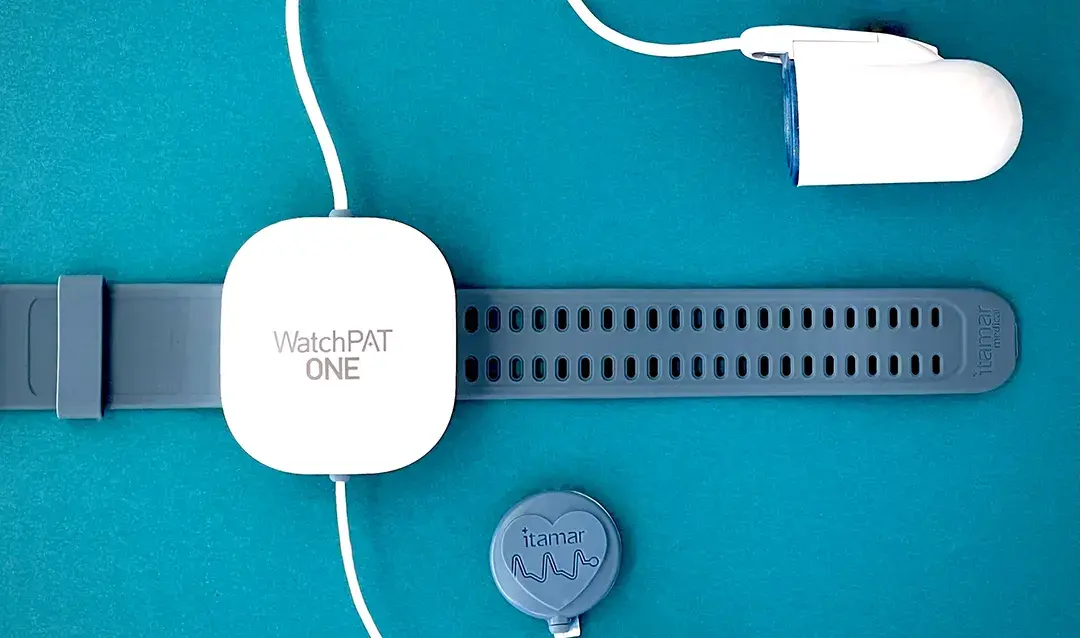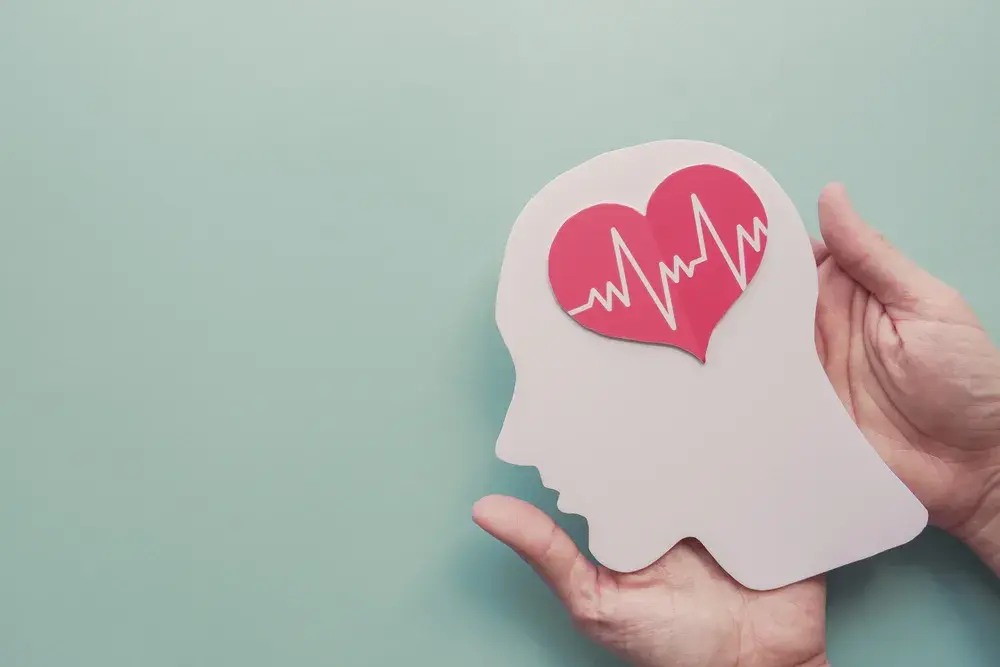How Does a Home Sleep Apnea Test Work?
Delve into the mechanics of modern home sleep tests, their components, and how they accurately diagnose sleep apnea.

Ever wonder what’s going on inside a home sleep test that allows it to detect whether or not you have sleep apnea?
Nowadays, health data sensors are ubiquitous in everyone’s phones. While that may help give you a sense of the number of steps you take in a day, there’s a lot more information medical providers need when we’re diagnosing sleep apnea. Not long ago, gaining that information required an expensive, uncomfortable, inconvenient night in a lab for an overnight sleep study. Thankfully, the technology needed to diagnose obstructive sleep apnea is now available through easy to use, disposable home sleep tests—often called HSTs for short.
Let's dive into the mechanics of these tests to understand why medical providers trust them as reliable and accurate in diagnosing sleep apnea.
What you’ll find inside a Home Sleep Apnea Test (HST)
If you're a fan of unboxing videos, you'll enjoy receiving your sleep apnea test in the mail. While each test may vary slightly, they typically include:
A finger clip
A wrist strap, similar to a smartwatch.
Maybe: A chest/abdominal belt or disc-shaped adhesive sensor
How to Take a Home Sleep Test
When you receive your home sleep test, we recommend putting it on your bedside table immediately so that you remember to complete it. Once you’re ready to lie down and go to sleep for the night, you can follow the test’s simple instructions to get started in just a few minutes. Typically, the instructions will ask you to:
Download the app for your sleep study from the iOS or Android App Store.
Remove all jewelry or watches.
Use the app to help you walk through applying the included finger probe, wrist strap, and chest sensor (if it’s in your kit).
Plug in your phone to ensure the app can continue running all night.
When you’re ready, start recording in the app, and go to sleep.
What the Home Sleep Test Sensors Measure
While you sleep, the sensors within your home sleep test will be measuring a variety of data that help medical providers diagnose sleep apnea. Here’s a breakdown of what each sensor is measuring and how those measurments impact your diagnosis:
In the finger clip:
Oxygen Levels and Heart Rate. Sleep apnea causes you to stop breathing, which can drop your oxygen and increase your heart rate. Monitoring these metrics through the finger clip allows us to measure the frequency that you’re experiencing apneic events.
Peripheral Arterial Tone (PAT). When you stop breathing while you’re asleep, your body triggers a “fight or flight” response to get you to start breathing again. The sensor in the finger clip indirectly detects this fight-or-flight response by measuring pressure changes in the arteries of your fingertip.
In the chest sensor:
Breathing Movement and Effort: if you have an included chest or abdominal piece, these can measure your chest expansion and the effort you’re putting into breathing. If you have sleep apnea, this sensor will likely detect increased breathing effort as your body works against a fully or partially closed airway.
Body Position. Sleep apnea can be worse depending on how you’re lying—on your back, on your side, or on your stomach. Through the chest sensor, we can monitor whether you’re having more episodes of not breathing while laying in a certain position, which can guide our treatment.
Unlike other components of the test, the wrist strap does not contain any sensing technology. Instead, it is mainly used to house the computer “brains” for the whole setup.
How an At-Home Sleep Study Detects Apnea
HSTs are purpose-built to detect Obstructive Sleep Apnea (OSA), a syndrome characterized by having “apneic events” or “apneas” all throughout the night.
An apnea is what happens when you stop breathing due to the relaxation of your airway, which is followed by the triggering of your fight or flight response so that you wake up just enough to start breathing again.
Learn more: What happens to your body during a sleep apnea episode?
The sensors in a home sleep test detect these apneas by observing both a drop in oxygen and signs of a fight or flight response (increased pulse rate and arterial tone).
We also look for “hypopneas,” which produce similar sensor data findings. Hypopneas are similar to apneas, with the difference being they don’t cause total airway collapse.
Learn more: What is Sleep Apnea?
Taking Your Home Sleep Test: Frequently Asked Questions
For many patients, it can be odd to associate taking a test with going to sleep. If you're feeling a bit anxious, we understand! That said, the test is quite straightforward, and we're here to support you through the process. If you're preparing to take a home sleep test, here are some useful answers to help you through common patient questions:
How long do I need to sleep?
There's no need to wait for a "perfect" night of sleep to take your home sleep test. After all, the test is meant to measure your usual sleeping patterns. The more typical of an experience you measure, the better! As far as hours go, home sleep tests can accurately diagnose sleep apnea with as little as four total hours of recorded sleep time.
What if I need to use my phone after I’ve started the test?
As a physician, I’ll remind you that middle of the night scrolling is not a great choice for your sleep health. For the purposes of the home sleep test, though, you needn’t be concerned. As long as you keep the home sleep test app active on your phone, navigating briefly to a different app won’t cause a technical issue.
What if I wake up during the night?
If you find yourself awake during the night, but it’s not yet time to get up for the day, don’t stop your home sleep test recording. The test will record your periods of wakefulness as well as when you return to sleep. Only stop the recording in your home sleep test app once you are ready to wake up for the day.
What if I need to use the restroom during the night?
Likewise, a middle of the night bathroom break won’t interfere with your home sleep test. Simply leave your phone at your bedside while you’re up, while the other sensors remain attached to you.. The test will track the time in which you were out of bed and register when you’ve gone back to sleep.
What happens in the morning?
When you wake up in the morning and are ready to be up for the day, you can press “end recording” in the home sleep test app on your phone to indicate the test is complete. Upon ending the recording, data from your test will be automatically and digitally sent to a board-certified sleep physician for interpretation.
After Your Home Sleep Test: The Next Steps
After a few days, depending on who prescribed your home sleep test, you may get the paper document of your formal sleep study report in your inbox in your email. Otherwise, you may be asked to schedule an appointment with a medical practitioner who will review your study.
That report will break down how many apneas you exhibited and calculate your Apnea-Hypopnea Index, or AHI for short, in order to formally determine whether you have sleep apnea.
Learn More: Understanding your Home Sleep Test Report
How a Home Sleep Test Calculates Your AHI Score
Your Apnea-Hypopnea Index—or AHI—is the single most important number used to not only diagnose sleep apnea, but also categorize its severity. Simply put, it's a measure of how many apnea or hypopnea events you have per hour of sleep.
If you have less than 5 apneas an hour, you don’t have sleep apnea. Alternatively, if that number is greater than 5, you'll be diagnosed with sleep apnea in one of three categories of severity:
Mild OSA: AHI of 5 to 15
Moderate OSA: AHI of 15 to 30
Severe OSA: AHI greater than 30
Understanding the status and severity of your diagnosis is key to developing a treatment plan with your medical provider.
Can a Home Sleep Test Diagnose Other Sleep Disorders?
For the most part, no. Home sleep tests are laser focused on detecting obstructive sleep apnea and have been built specifically for that purpose. One test on the market, the WatchPat One Home Sleep Test, can detect central sleep apnea, which is a much less common form of apnea. However, no home sleep study can diagnose other sleep issues like insomnia or restless legs.2
If your physician suspects one of these sleep disorders, they may use a home sleep test to rule out obstructive sleep apnea before recommending an in-lab overnight sleep study.
Related: What’s the difference between obstructive and central sleep apnea?
The Verdict
We’ve come a long way from the early days of diagnosing sleep apnea. Years of advances in sensing technology now allow home sleep tests to gather copious amounts of information without a spaghetti bowl of wires and a mountain of monitors. Packing all these advances into a simple, lightweight device means much more comfort while you sleep, potentially leading to more accurate results in sleep apnea diagnosis.
Gerstenslager B, Slowik JM. Sleep Study. [Updated 2023 Aug 14]. In: StatPearls [Internet]. Treasure Island (FL): StatPearls Publishing; 2024 Jan-. Available from: https://www.ncbi.nlm.nih.gov/books/NBK563147/
Mainieri G, Loddo G, Provini F, Nobili L, Manconi M, Castelnovo A. Diagnosis and Management of NREM Sleep Parasomnias in Children and Adults. Diagnostics (Basel). 2023 Mar 27;13(7):1261. doi: 10.3390/diagnostics13071261. PMID: 37046480; PMCID: PMC10093221. Available from: https://www.ncbi.nlm.nih.gov/pmc/articles/PMC10093221/
Pillar G, Berall M, Berry R, Etzioni T, Shrater N, Hwang D, Ibrahim M, Litman E, Manthena P, Koren-Morag N, Rama A, Schnall RP, Sheffy K, Spiegel R, Tauman R, Penzel T. Detecting central sleep apnea in adult patients using WatchPAT-a multicenter validation study. Sleep Breath. 2020 Mar;24(1):387-398. doi: 10.1007/s11325-019-01904-5. Epub 2019 Aug 11. PMID: 31402439; PMCID: PMC7127995. Available from: https://pubmed.ncbi.nlm.nih.gov/31402439/




